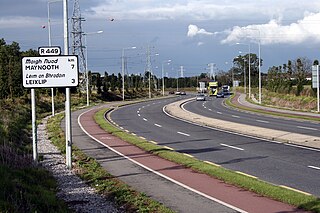| Religious Society of Friends | |
|---|---|
| Classification | Christian |
| Orientation | Quakers |
| Polity | Congregationalist polity |
| Leader | Changes Annually |
| Associations | Friends World Committee for Consultation, Irish Council of Churches |
| Region | Ireland |
| Founder | William Edmundson |
| Origin | 1654 Lurgan, County Armagh |
| Separated from | Britain Yearly Meeting |
| Congregations | 28 |
| Members | 1600 |
| Hospitals | 1 |
| Nursing homes | 1 |
| Aid organization | Irish Quaker Faith in Action (IQFA), Christian Aid |
| Primary schools | 3 |
| Secondary schools | 3 |
| Official website | quakers-in-ireland |
The Religious Society of Friends (Quakers) have a long history in Ireland; their first recorded Meeting for Worship in Ireland was in 1654, at the home of William Edmundson, in Lurgan. [1]
Contents
Quakers were known for entrepreneurship, setting up many businesses in Ireland, with many families such as the Goodbodys, Bewleys, Pims, Lambs, Jacobs, Edmundsons, Perrys, and Bells involved in milling, textiles, shipping, imports and exports, food and tobacco production, brewing, iron production and railway industries. [2] William Penn, the founder of Pennsylvania, converted to Quakerism while dealing with his father's estates in Ireland. He attended meetings in Cork. [3] In the 1650s and 1660s Quakers were treated with some severity by the authorities, especially in Cork.
The Quakers founded the town of Mountmellick, County Laois, in 1657, led by William Edmundson. There is a Quaker burial ground in Rosenallis, Co, Laois. [4] Ballitore in County Kildare was planned as a Quaker town, [5] Abraham Shackleton (ancestor of the polar explorer Ernest Shackleton) founded a school there in 1726. Quakers from all over Ireland attended, as did many non-Quakers. Among the famous non-Quakers to go there were Henry Grattan, Cardinal Paul Cullen, James Napper Tandy, and Edmund Burke.
In 1692, the Quakers opened a meeting house in Sycamore Alley, off Dame Street in Dublin. These premises expanded with the purchase of property backing onto Eustace Street. The Quakers building on Eustace Street, purchased in 1817, is the former Eagle Tavern, it is where the Dublin Society of the United Irishmen was formed in 1791. [6] In 1988 they sold some of their property on Eustace Street, which became the Irish Film Institute.
The Cork Street Fever Hospital, Dublin was founded by Quakers in the early 19th century. The Royal Hospital, Donnybrook in Dublin, was also originally a Quaker hospital. [7] There was a Quaker graveyard in Cork Street, and one in York Street off St. Stephen's Green, which was sold for the building of the Royal College of Surgeons. [8]
The Quakers were known for setting up relief measures in their localities during the Great Famine. [9]
Quakers' numbers declined due in some part due to dismembering, where a member was disowned if they married a non-quaker, which is no longer practised. [10]
The Society was one of the six religious denominations recognized by article 44.1.3 of the Irish Constitution, which was adopted by popular plebiscite in 1937. [11] This reference was deleted from the constitution via the Fifth Amendment of the Constitution of Ireland in 1972 along with that of the other recognized denominations and the "special position" of the Roman Catholic Church in Ireland.










